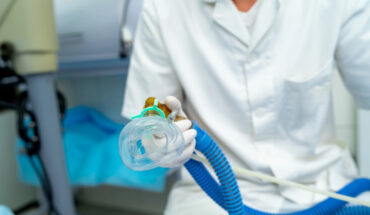
In the quiet hum of a modern dental clinic, technology and tenderness meet in ways that once seemed impossible. A small cap of ceramic or porcelain—known clinically as a dental crown—is no longer just a piece of restorative work. It has become a symbol of how science, art, and the psychology of healing intertwine. Beneath its polished surface lies more than structural reinforcement; it carries an evolving story of how people choose to invest not only in their oral health but in their sense of self-worth and wellbeing.
The Modern Meaning of Restoration
To restore a tooth is, in a way, to restore confidence. Modern dentistry no longer views crowns as static replacements, but as functional art forms engineered with human emotion in mind. When someone chooses to have a dental crown placed, they are not merely repairing enamel—they are participating in a dialogue between precision medicine and personal empowerment.
The science behind crowns has evolved dramatically over the past two decades. Once crafted by hand and fit through trial and error, today’s crowns can be digitally designed and milled within hours using CAD/CAM (computer-aided design and manufacturing) systems. These systems capture the topography of a tooth down to micrometers, ensuring accuracy that human hands alone could never achieve. The result is not just a restoration—it’s a biomechanical harmony between tooth and technology.
This digital precision echoes the broader trend in health care: the move toward personalization. Just as genetic testing tailors medical treatments, dental technology personalizes each restoration to the unique contours of an individual’s mouth, ensuring comfort, durability, and aesthetic integrity.
When Science Meets Self-Care
What makes dental crowns fascinating today isn’t only their technical prowess—it’s how they’ve entered the language of self-care. In a world increasingly defined by stress, fast-paced living, and aesthetic awareness, oral health has become a form of self-respect. People are realising that caring for their teeth isn’t vanity—it’s vitality.
The dental crown cost reflects this shift in perspective. While the investment may initially seem high compared to simpler treatments, patients increasingly see it as an act of preservation—one that protects the foundation of their health and self-image. The average cost of dental crown varies depending on materials, procedure complexity, and location, but behind the numbers lies something more valuable: peace of mind. A crown prevents further decay, strengthens weakened teeth, and helps avoid more invasive procedures later on.
From a psychological standpoint, the decision to restore rather than extract is profound. It speaks to a cultural shift toward healing over replacement, a philosophy that mirrors broader trends in wellness. Instead of discarding what’s damaged, we choose to restore it—precisely, patiently, and beautifully.
The Crown as a Reflection of Modern Science
The latest dental updates showcase remarkable advances that have redefined how crowns are made and what they can do. Today’s materials mimic the light transmission and translucency of natural enamel with uncanny realism. Zirconia and lithium disilicate ceramics offer strength and aesthetics once thought mutually exclusive. Adhesive bonding technologies have reduced the need for extensive drilling, preserving more of the patient’s natural tooth structure.
Moreover, biocompatible materials are becoming the standard—reducing inflammation, improving longevity, and aligning dental restoration with the body’s natural biology. Even 3D printing is reshaping the field, offering crowns that can be designed, tested, and fabricated with almost zero waste.
These innovations go beyond the mechanical. They reflect a deeper ethical awareness in dentistry—a move toward sustainability, precision, and patient-centred care. The future of restorative dentistry is not just about fixing teeth; it’s about understanding how restoration influences the human spirit.
Aesthetics, Identity, and the Subtle Science of Healing
Our smiles carry personal narratives. They shape how we speak, how we express joy, and how others perceive us. A damaged tooth, though small, can subtly alter the way someone interacts with the world. It can erode confidence, change posture, or dim a once-effortless laugh.
A dental crown, therefore, becomes more than restoration—it becomes reclamation. Restoring a single tooth can restore an entire demeanor. Patients often report not only physical relief but emotional renewal: the return of ease when smiling, chewing, or speaking.
This connection between aesthetic repair and emotional healing is gaining recognition in psychological and dental research alike. Oral health has measurable impacts on mental health and social wellbeing. Modern restorative dentistry, through precision techniques and compassionate communication, acknowledges this mind-body link more deeply than ever.
Beyond the Chair: The New Dental Consciousness
The evolution of crowns and their perception mirrors a broader transformation in dentistry—a movement from clinical necessity to holistic care. Today’s dental professionals don’t just treat teeth; they treat people. They blend technology with empathy, ensuring each procedure supports not just structural health but emotional resilience.
The latest dental updates aren’t just about tools and techniques—they’re about mindset. Dentists are becoming educators and partners in wellness, guiding patients toward informed choices and long-term oral stability. Whether it’s through AI-assisted diagnostics, real-time 3D imaging, or minimally invasive procedures, the goal remains the same: to heal through precision, not just to repair through intervention.
The Future Shines Through Porcelain
As technology advances and patient expectations evolve, the humble dental crown stands as a microcosm of modern health care’s most beautiful truth—that healing can be both scientific and soulful. Each crown represents a fusion of precision engineering and personal transformation, of data-driven dentistry and delicate human intention.
So, when a patient invests in a dental crown, they are not merely paying for materials or time. They are participating in a philosophy that sees the body not as a machine to be fixed, but as a system to be cared for, understood, and respected.
In the world of contemporary dentistry, healing through precision is more than a phrase—it’s a promise. A promise that every smile restored is a story rewritten, where science becomes a tool for self-care, and every crown placed is a quiet act of renewal.




